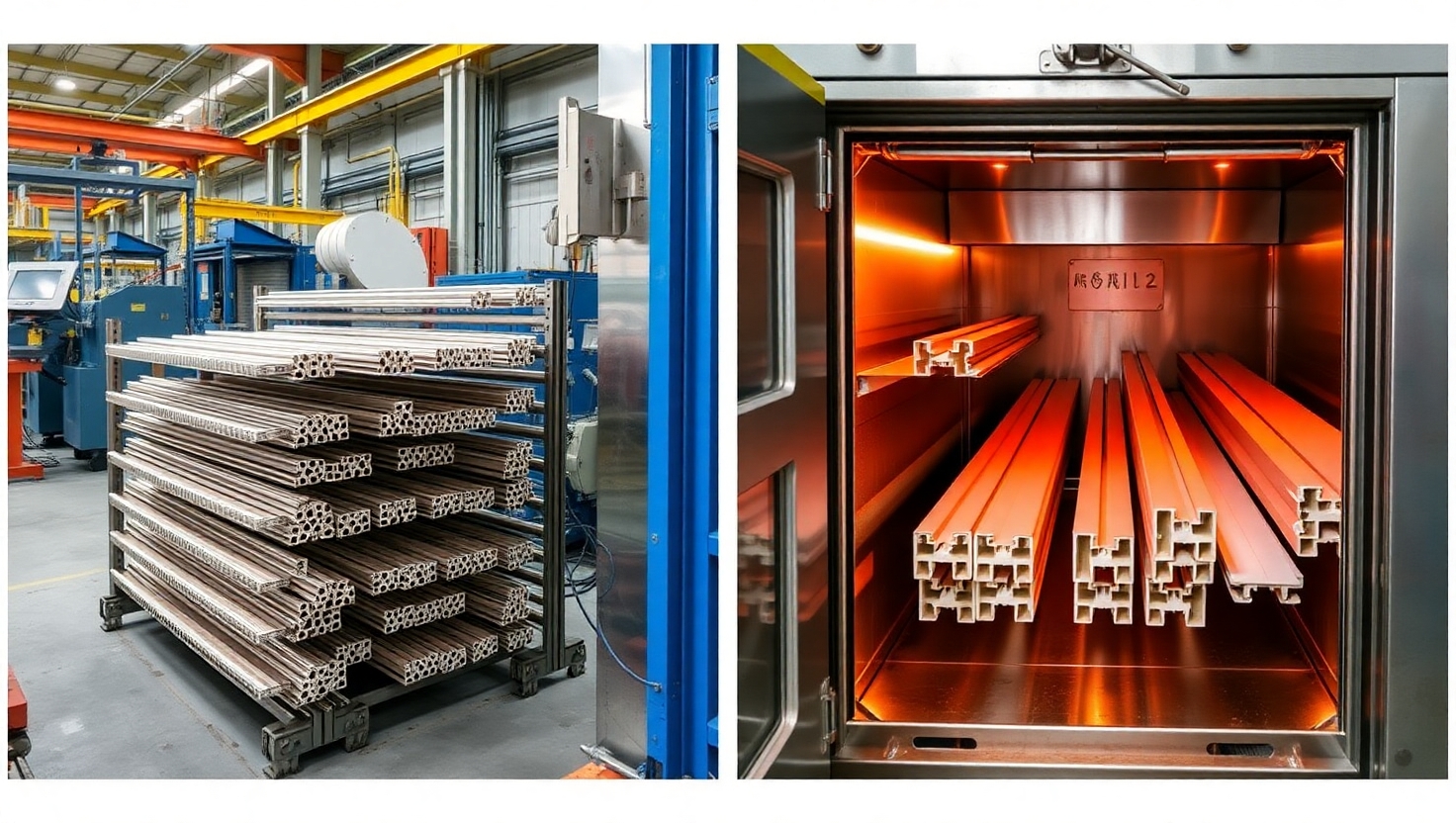Why Tempering (T5 vs T6) Is Critical in Aluminium Extrusions
Published by: ALUTimes | Date: July 15, 2025
Table of Contents
- Introduction
- What Is Tempering in Aluminium?
- Understanding T5 Tempering
- Understanding T6 Tempering
- T5 vs T6: Key Differences
- Applications of T5 and T6 Aluminium Extrusions
- How to Select the Right Temper
- Case Study: Solar Mounting System
- Conclusion
- Disclaimer
Introduction
Aluminium extrusions undergo various heat treatments to enhance their mechanical properties. Among the most common are T5 and T6 tempering. These treatments influence not just strength, but also machinability, corrosion resistance, and suitability for specific industrial applications. In this guide, we dive deep into the significance of tempering, with a focus on how choosing the right temper—T5 or T6—can make or break your aluminium extrusion project.
What Is Tempering in Aluminium?
Tempering refers to the controlled heating and cooling processes that aluminium alloys undergo after extrusion. These processes alter the metal’s microstructure, enhancing its strength, ductility, and corrosion resistance. The temper designation (like T5, T6) gives insight into the specific treatment sequence used on the aluminium.
Understanding T5 Tempering
- Process: Cooling from extrusion followed by artificial aging (heat treatment)
- Common Alloys: 6063-T5, 6005-T5
- Strength: Medium
- Advantages: Faster production, lower cost
- Applications: Architectural framing, curtain walls, signage
Understanding T6 Tempering
- Process: Solution heat treatment followed by quenching and artificial aging
- Common Alloys: 6061-T6, 6082-T6
- Strength: High
- Advantages: Superior strength and machinability
- Applications: Aerospace, automotive, structural components
T5 vs T6: Key Differences
| Feature | T5 | T6 |
|---|---|---|
| Heat Treatment | Artificial Aging | Solution Treatment + Aging |
| Strength | Moderate | High |
| Production Time | Shorter | Longer |
| Cost | Lower | Higher |
| Applications | Non-load bearing | Load-bearing, high stress |
Applications of T5 and T6 Aluminium Extrusions
Each temper is suited to different scenarios:
- T5: Decorative trims, storefronts, curtain walls
- T6: Vehicle chassis, heavy-duty frames, machinery parts
The choice often depends on mechanical requirements and design tolerances.
How to Select the Right Temper
- Analyze the application’s strength requirement
- Evaluate thermal expansion needs
- Consider post-processing like welding or machining
- Estimate cost-to-benefit ratio
- Consult with material engineers and extrusion experts
Case Study: Choosing Between T5 and T6
A Bangalore-based electric vehicle startup was developing battery trays using aluminium extrusion. They initially considered 6063-T5 for budget reasons, but later shifted to 6082-T6 due to structural rigidity demands. While the cost increased by 18%, it improved load endurance by 35%, allowing safer battery housing.
Conclusion
The difference between T5 and T6 tempering is more than just a technical footnote. It defines how aluminium extrusions perform under pressure—literally. Whether you’re designing for aesthetics or for aerospace, knowing the impact of tempering ensures better design decisions and long-term durability. At ALUTimes, we recommend evaluating both mechanical and financial aspects before selecting your extrusion temper.
Disclaimer
This article is for informational purposes only. Always consult a qualified material scientist or extrusion supplier for decisions specific to your application.

